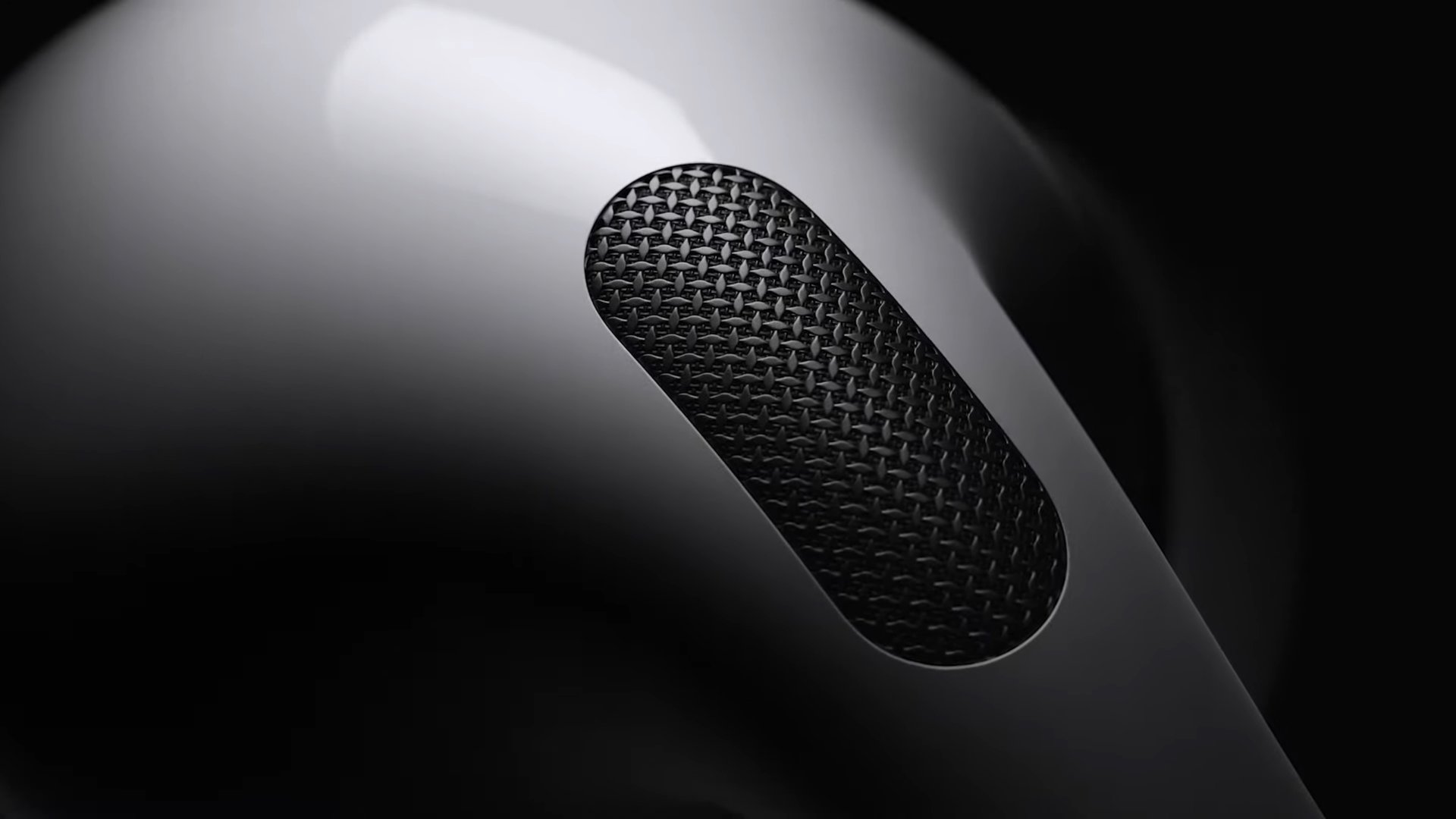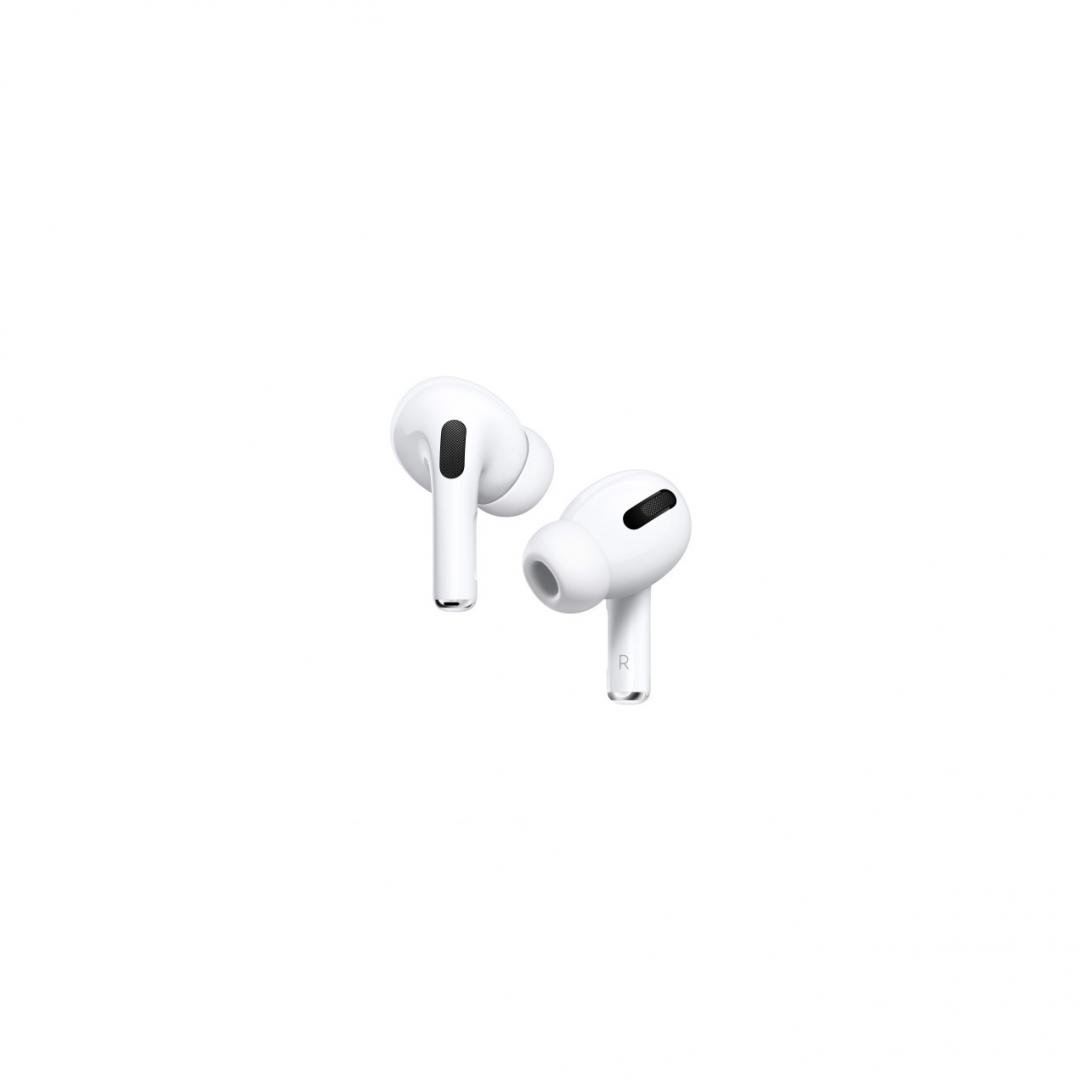
Table of contents
The AirPods have been around since 2016, and the third-generation AirPods hit the scene in 2021. In that time, these true wireless earbuds have become practically synonymous with the product category. With the arrival of the AirPods Pro (2nd generation), the lineup sees many enhancements. How do these two offerings from Apple stack up when put head to head? Is being Pro worth it?
We’ll dive into the specifics to help you decide when it comes to the Apple AirPods Pro (2nd generation) vs AirPods (3rd generation).
AirPods Pro (2nd generation) vs AirPods (3rd generation)
Design
The AirPods Pro (2nd gen) and AirPods (3rd gen) look similar at first glance. Both are roughly oval earbuds with stems. But an essential difference of the Pro earbuds is the inclusion of silicone ear tips. These provide a seal in your ear canal for better isolation versus the non-pro AirPods (3rd generation). Both the AirPods Pro (2nd generation) and AirPods (3rd generation) only come in Apple’s signature white color.
The AirPods Pro (2nd generation) and AirPods (3rd generation) speak the same design language.
An IPX4 rating protects both the AirPods Pro (2nd generation) and AirPods (3rd generation) from incidental moisture. Furthermore, they both have in-ear detection, motion detectors, and accelerometers. However, the AirPods Pro (2nd generation) lets you adjust the volume by swiping the stems, which the AirPods (3rd generation) cannot do.
Battery life is roughly the same for both of these earbuds, too. The AirPods Pro (2nd generation) claims to get up to six hours of listening time and up to 30 hours total with the charging case. Likewise, the third-generation AirPods got 6 hours, 21 minutes, according to our testing, with the case able to bring that up to 30 hours. The AirPods Pro (1st generation) got just over five hours according to the same test for comparison. You can charge the AirPods Pro (2nd generation) with MagSafe, a Qi-compatible wireless charger, or Lightning cable. The AirPods (3rd generation) give you the option of a Lightning charging case or a MagSafe charging case, but not both, with the latter being slightly more expensive.
With the launch of the AirPods Pro (2nd generation), Apple says the rare earth magnets used in the product are from 100% recycled sources. Plus, you can recycle all AirPods models by mailing them in or bringing them to an Apple Store.
Features
Much of the ecosystem-specific functionality AirPods are known for comes from the H1 chip. With the introduction of the AirPods Pro (2nd generation) comes the H2 chip. Apple says it promises “smarter noise-cancellation” and “three-dimensional” sound. The H1 chip in the AirPods (3rd generation) makes it easy to sync Apple devices with the earbuds and gives them some ecosystem-exclusive features like spatial audio, which the AirPods Pro (2nd generation) retain. The H2 chip is likely more efficient, too, which leads to better battery life.
The AirPods Pro (2nd generation) upgrade their Bluetooth version to 5.3, while the AirPods (3rd generation) have 5.0. As a result, some features may debut down the line, but we’ll have to wait and see. The AirPods (3rd generation) support the SBC and AAC Bluetooth codecs, which is not likely to change with the AirPods Pro (2nd generation). That makes both of them less than great for use on Android.
Controls
As mentioned, both the AirPods Pro (2nd generation) and AirPods (3rd generation) let you use the force-sensitive stems to control content, but only the second-generation AirPods Pro let you control volume via sliding. That’s not new to the world of true wireless earbuds, however. You can find similar functionality on the Nothing Ear 1, for instance.
Both of these earbuds come with Find My functionality, too. But the new AirPods Pro (2nd generation) incorporate the U1 chip into their case. That means Precision Finding is available to help you find a lost case. It also has a built-in speaker to assist in the search process. Finally, a built-in lanyard loop lets you attach the case to a bag or keychain. The AirPods (3rd generation) case has none of these features.
Noise-cancelling
A big selling point of the AirPods Pro (1st generation) was the inclusion of active noise-cancelling (ANC). That remains true with the AirPods Pro (2nd generation). The AirPods (3rd generation) have no ANC and no ear tips, so you won’t get much isolation, and external noises will make it through.
While many other models of true wireless earbuds don’t have noise-cancelling, they at least have ear tips to block out some unwanted sounds. They also make it easier to hear your content without raising the volume too much.
The AirPods Pro (2nd generation) win this battle. The AirPods (3rd generation) might be tricky for people to fit depending on their ear shape, and they might get uncomfortable after some time, too.
Sound
The AirPods (3rd generation) frequency response ends up making low notes slightly quieter than you’d expect, but it’s not drastic, and you may not even notice. But a significant caveat here is it all depends on how good a fit you can get. In contrast, the AirPods Pro (2nd generation) can seal in your ears, so you’ll probably get far better results.
We’ll have to test the AirPods Pro (2nd generation), but their predecessor, the AirPods Pro (1st generation), had a solid frequency response curve that made it easy to distinguish instruments and vocals. The second-generation AirPods Pro bring an update to Apple’s spatial audio implementation with the introduction of Personalized Spatial Audio. It’s basically an ear scanning feature like you’ll find when using Sony 360 Reality Audio. You take photos of your ears, and the earbuds create a personalized profile based on that data. According to Apple, the AirPods (3rd generation) also now have this feature. So, it appears to be part of the updated spatial audio standard itself, not the buds per se.
Both have Adaptive EQ, an automatic equalizer that tailors the earbuds’ sound to your ears. Apple says the AirPods Pro (2nd generation) have a “new low-distortion” driver and “custom amp,” but we’ll have to see if these make any difference.
Neither the AirPods Pro (2nd generation) nor AirPods (3rd generation) claim to support lossless playback. Furthermore, both are limited to the EQ found in Apple Music, and the earbuds won’t save any changes you make.
Price and Colors

Apple AirPods Pro (2nd Gen.)
Wireless and large battery • Better ANC • Upgraded SoC
The AirPods Pro 2 feature numerous upgrades over the original. Even the case got some upgrades, with a new speaker system on the case which can sound an alarm to help you locate it. There’s also wireless and MagSafe charging onboard. The new Pro earbuds also have a new H2 chip, which make them more powerful and create better sound. A larger battery is here, spatial audio is also included, and active noise cancellation is still onboard, with Apple claiming twice as much cancellation as previous AirPods.
The Apple AirPods (3rd generation) launched at $179 for the MagSafe charging case version and $169 for the Lightning charging case version and have remained at that price since on Apple’s website, though they do go on sale sometimes elsewhere. They only come in Apple’s signature white color.
The AirPods Pro (2nd generation) are $249; you can start pre-ordering them on September 9, 2022, at 8:00 am Eastern time. General availability begins September 23, 2022. They also only come in white.
Specs
| AirPods (3rd generation) | AirPods Pro (2nd generation) | |
|---|---|---|
|
Dimensions |
AirPods (3rd generation)
Earbud: 30.79 x 18.26 x 19.21mm |
AirPods Pro (2nd generation)
Earbud: 30.9 x 21.8 x 24.0mm |
|
Weights |
AirPods (3rd generation)
Earbud: 4.28g |
AirPods Pro (2nd generation)
Earbud: 5.3g |
|
Bluetooth connectivity |
AirPods (3rd generation)
Bluetooth 5.0 |
AirPods Pro (2nd generation)
Bluetooth 5.3 |
|
Water resistance |
AirPods (3rd generation)
IPX4 |
AirPods Pro (2nd generation)
IPX4 |
|
Listening time |
AirPods (3rd generation)
6 hours (5 hours with Spatial Audio) |
AirPods Pro (2nd generation)
6 hours with ANC (5.5 hours with Personalized Spatial Audio and Head Tracking) |
|
Talk time |
AirPods (3rd generation)
4 hours |
AirPods Pro (2nd generation)
4.5 hours with ANC |
|
Charging |
AirPods (3rd generation)
Lightning or MagSafe depending on case choice (but not both) |
AirPods Pro (2nd generation)
Lightning |
|
Speakers and microphones |
AirPods (3rd generation)
Custom high-excursion Apple driver |
AirPods Pro (2nd generation)
Custom high-excursion Apple driver |
|
Device compatibility |
AirPods (3rd generation)
Latest versions of iOS, macOS, Apple Watch, Apple TV |
AirPods Pro (2nd generation)
Latest versions of iOS, macOS, Apple Watch, Apple TV |
|
Chipset |
AirPods (3rd generation)
H1 (earbuds) |
AirPods Pro (2nd generation)
H2 (earbuds) |
|
Ear tip selection |
AirPods (3rd generation)
None |
AirPods Pro (2nd generation)
XS, S, M, L |
|
Colors |
AirPods (3rd generation)
White |
AirPods Pro (2nd generation)
White |
AirPods Pro (2nd generation) vs AirPods (3rd generation): Which should you buy?
Though we still have a few things to test on the AirPods Pro (2nd generation), they make for a better choice overall for most people. You get ANC, ear tips, more features, and more reliable performance from these earbuds.
The one thing the AirPods (3rd generation) have going for them is price. They’re cheaper than the second-generation AirPods Pro. Otherwise, they lack ear tips and ANC, meaning they’ll be tricky to fit, and plenty of external noise will make it through during your listening sessions.
Either way, it’s best to use AirPods of any kind with iOS devices. They’re less than ideal for Android users.



